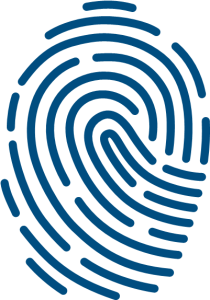3

LGBTQ+ Inclusivity
The population of the United States is becoming increasingly diverse. According to the Household Pulse Survey administered by the United States Census Bureau, those who identify as lesbian, gay, bisexual, transgender, and/or queer (LGBTQ) represent at least 20 million adults (8%) in the United States (Human Rights Campaign Foundation [HRCF], 2021). For nurses to provide culturally competent care, it is important that the Nurse Educator incorporates sexually diverse populations into curricula. Nurse Educators must also be able to teach students how to engage in therapeutic communication with diverse populations.
Research shows that nurses and other healthcare providers often lack proper education to provide competent care to LGBTQ populations. For example, a young transgender patient visited an emergency department (ED) for bleeding complications after a gender reassignment surgery (Kroning et al., 2017). The provider notified the surgeon and he recommended consulting with the local urology group because he was several hours away. The urologist refused to treat the patient due to lack of experience treating complications of the gender reassignment surgery. The provider arranged for the patient to be transferred to another hospital, but that hospital refused because the specialists at that hospital were not comfortable treating complications of a gender reassignment surgery. The patient was given a blood transfusion, the bleeding was stopped, and the patient was scheduled to follow up with an outpatient visit the next morning (Kroning et al., 2017). The scenario above is one of numerous occasions in which a patient received delayed care due to the lack of cultural competency. Healthy People 2020 recommends implementing diverse populations into training for medical students to improve LGBTQ health (2022).
Individuals who identify as LGBTQ experience greater health disparities than their heterosexual counterparts (Healthy People 2020, 2022). Youth who identify as LGBTQ are at a greater risk of committing suicide (Healthy People 2020, 2022). Individuals identifying as gay and/or transgender are at an increased risk of contracting HIV and other sexually transmitted diseases (STDs) (Healthy People 2020, 2022). The LGBTQ population abuses drugs, alcohol, and tobacco at greater rates than their heterosexual counterparts (Healthy People 2020, 2022). This may lead to an increased risk for several medical issues. Nurse Educators must be aware of these disparities and incorporate these types of discussions into nursing courses.
One of the goals of Healthy People 2030 is to establish “a society in which all people achieve their full potential for health and well-being across the lifespan” (Office of Disease Prevention and Health Promotion, 2017, p. 3). Little research exists on specific needs of unique groups of the LGBTQ population. One way to implement the LGBTQ population into nursing curricula is via research assignments geared towards minority populations. Instead of singling out certain populations, assignments could focus on minority populations and improving health for those at a greater risk for healthcare disparities. Another way to implement different populations into nursing curricula is through case studies.
A discussion board is a great way to facilitate student engagement in a case study. Discussion boards encourage students to interact with one another and consider other perspectives on a topic. Nurse Educators could present case studies on discussion boards and incorporate patients who identify as LGBTQ. For more hands-on experiences, simulation could incorporate patients who identify as LGBTQ. This would give students the opportunity to practice communicating with diverse populations.
All individuals have a right to competent care. In order for us as nurses to provide competent care, it is vital that we consider the needs of diverse populations. Exposure to diverse populations must start in the classroom. We should also be aware that nursing is a career of continuous education that should embrace current research and evidence to provide the best care to our patients and families.


